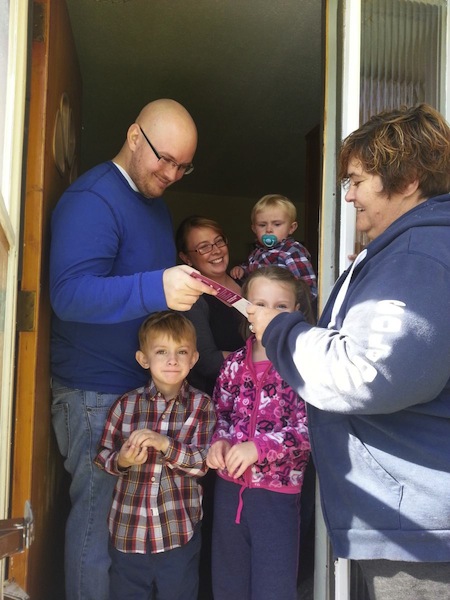We’re part way through our campaign to protect, strengthen and expand public health care in Canada and we’re thrilled with how the campaign is progressing. It’s not surprising to us that many Canadians are unaware of the federal cuts to health care. The coming $36 billion of cuts haven’t gotten a lot of media attention partially because many of the premiers are silent on the cuts and afraid to speak out because the federal government may claw back their funding in other areas (like the Canada Social Transfer).
But the people we’re speaking to in townhalls, at farmer’s markets and on their doorstep are not surprised when we tell them about the federal government’s abdication from health care. In fact many constituents mention some of the cuts they do know about like the closure of the Health Council of Canada, the loss of health care for non-government sponsored refugees, the contracting out of hospital services and increasing fees at their local clinic — which many of them ask us about their legality.
In December 2011, the late Minister Jim Flaherty left a piece of paper on the desks of provincial finance ministers saying the federal government was decreasing the 6 per cent escalator of the Canada Health Transfer by nearly 50 per cent and tying it to GDP. The tying of health care funding to GDP is estimated by the Parliamentary Budget Officer and the Council of the Federation Financial Working Group to cost the provinces $36 billion in the next ten years. It will also take the federal contribution for provincial health care spending from its original 50 per cent and its current 20 per cent, down to 18 per cent by 2024.
 On top of cuts to the CHT, the federal government has also stopped giving equalization payments to the provinces with lower GDPs. This leaves poorer provinces — many of them with aging populations and greater chronic care needs — with less funding for health care.
On top of cuts to the CHT, the federal government has also stopped giving equalization payments to the provinces with lower GDPs. This leaves poorer provinces — many of them with aging populations and greater chronic care needs — with less funding for health care.
Tying federal health-care contributions to GDP also means that when the economy is doing badly, and families are struggling to purchase healthy food and prescription medications, there will also be fewer health-care services to go around.
The Council of Canadians, Canadian Union of Public Employees (CUPE), provincial health coalitions, and national and provincial allies have been working together on a campaign that educates health-care advocates on the federal government’s move away from public health care. It then trains those advocates on how to canvass and co-ordinates canvassing across the ridings.

Ridings have been rolling out the campaign across the country. And townhall events with Maude Barlow, Paul Moist, and a local speaker have been held in Winnipeg, Man.; Moncton, N.B.; and Bridgewater, N.S.
We’re thrilled with the allies we’re meeting, the advocates that are getting involved in the campaign, the positive response we get at the doorstep, and the overwhelming attendance at townhalls.

For photos of the campaign, check out our gallery.
To follow our events, follow our Twitter feed or like us on Facebook.
Photo credit (in order of appearance) to:
CUPE; Trevor Beckerson – CFU-UNIFOR 2040 -beckerson.ca; CUPE; Randy Rotheisler, BC



